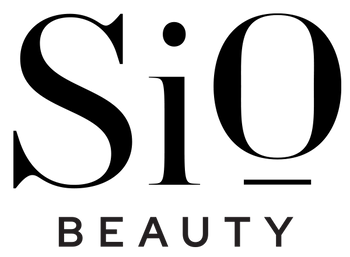How to Exfoliate

It’s nothing new. Chances are you’ve known about exfoliating since the first day you opened up a Seventeen Magazine way back when. But things have changed a lot over the years. For one, the ubiquitous micro-bead scrubs we once knew and loved have been banned since 2015. And for another, the apricot pit and walnut shell scrubs we used to swear by are now wildly controversial (look no further than the St. Ives lawsuit and the Kylie Skin drama). So, let’s rewind a second and get back to the basics. What exactly is exfoliating, anyway? Simply put, exfoliating is the removal of dead skin cells, using either a mechanical process, like a scrub or brush -- or chemical methods, like acids and enzymes. Now that we’ve scratched the surface (wink, wink), we may as well take a deeper look. What’s the best way to exfoliate? What should we use? And what, really, is the point of it all?
Benefits of Exfoliation
You probably know that exfoliating can make your skin look brighter and younger -- but did you know that it actually improves the health of your skin? Using a facial exfoliator stimulates circulation, accelerates cell turnover, and supports our natural ability to produce collagen. It also fights discoloration, congestion, and dullness, overall contributing to a heartier, more youthful-looking complexion. As for oily and acne-prone skin, exfoliating also clears out clogged pores and even helps to fade acne scars. And as if all that weren’t enough, exfoliating also encourages topical products to fully penetrate the skin and deliver nutrients, unhindered by any buildup at the surface. So, make all those expensive Sephora hauls count, and get scrubbing!

How to Exfoliate Your Face
The best way to exfoliate has everything to do with the treatment type you choose. But as a general rule, you’ll always want to start with a clean slate. The last thing you want to do is grind dirt and grime into those lovely pores. So, wash up with a quality cleanser, then go forth with your exfoliating tool, scrub, or serum, applying it in a gentle circular motion. It’s important that you let the face exfoliator do the work -- no need to apply loads of pressure or friction. And, speaking of taking it easy, note that you don’t need to exfoliate every day. In fact, it’s best for your skin to stick to once or twice a week, max.
Products and Tools for Proper Exfoliation
With so many options on the menu, how do you choose the best method for you? Let’s start by learning about each one and how it differs from the next.
Scrubs
When you think of exfoliating, a tube of that classic gritty paste is probably the image that comes to mind. Tried and true, a scrub physically breaks up gunk and grime within the pores using some kind of abrasive, like powder, granules, or crystals. This might mean salt, sugar, silica, oats, coffee, or clay, to name just a few. Whatever they’re made of, these tiny bits work to buff out the skin, removing dead cells and leaving the skin baby soft and bright. The key with scrubs is to avoid anything excessively rough. Some scrubs contain jagged particles that can actually create microtears in the skin, making way for breakouts and irritation. In fact, if you’re already prone to acne flare-ups, you may be better off with a chemical exfoliator instead.
Acids
In chemical exfoliation, skin-safe acids slough away dead skin cells via a chemical reaction. That may sound scary, but actually, chemical exfoliants can sometimes be even gentler than their mechanical counterparts -- although, that all depends on the kind of acid and its concentration. Commonly branded as “peels,” these exfoliating treatments often use alpha-hydroxy acids (AHAs) and beta-hydroxy acids (BHAs), including glycolic acid, lactic acid, and salicylic acid. You can readily buy safe, effective low-grade acid solutions for home use (these are your serums, gels, cleansers, and masks). Just make sure that you read all instructions, as they vary widely from product to product. Or, if you’d rather leave it to the trained experts, you can also opt for a heavy-duty peel at the dermatologist’s office. While you might see more drastic results from the pros, you’ll also have to expect some redness and, as you might guess, peeling.
Enzymes
When it comes to chemical exfoliation, enzymes are a gentler, closer-to-nature alternative to hydroxy acids. Typically derived from fruits and plants or from natural fermentation, enzymes work by breaking apart the “glue” that holds together dead skin cells. Because they can do this without disturbing healthy bacteria or throwing off the skin’s pH, they’re an excellent choice for those with sensitive skin. Enzymes commonly found in exfoliating treatments include pumpkin enzymes, pineapple enzymes, and papaya enzymes. And just like acids, enzyme treatments come in a variety of forms: serums, masks, and peels, among others. As with any form of exfoliation, if you’re prone to irritation, it’s important not to overdo it -- and always follow with something soothing. Then, don’t forget to finish with a nourishing moisturizer.
Scrubber Tools
Liquids and gels run out, but tools are forever! Well, maybe not forever, but they’re a good long-lasting option, no doubt. The OG skin exfoliant was the good old-fashioned washcloth -- and truth be told, it’s still a fine way to go. But these days, there are endless choices that just may be worth the upgrade. Clarisonic was early to the party with their line of sonic face brushes, konjac sponges have taken the J- and K-beauty worlds by storm, and there’s no shortage of scrubber gloves, pads, wands, and next-gen cloths on the market, either. These tools, in all their differing shapes and forms, work more or less the same way: physically dislodging dead cells, buffing down to a fresh, smooth layer of skin beneath. Just know that rougher is not better; soft bristles and cushy fabrics are ideal for polishing -- rather than damaging -- that delicate complexion.
Microdermabrasion
There’s nothing wrong with a solid home exfoliation routine. But if you’re feeling like your skin could use an extra glow-up, look no further than your local aesthetician or dermatologist for a microdermabrasion treatment. Microdermabrasion is a minimally invasive exfoliating procedure geared towards busting wrinkles, dark spots, scars, and uneven skin tone. It generally uses either a diamond- or crystal-tipped wand to slough off the top layer of skin and suction out all the gunk. It’s highly effective and calls for little to no downtime. Expect some minor redness and sensitivity, but nothing a little skincare can’t handle.
Let’s Summarize, Shall We?
Exfoliation can be beneficial to most. Whether you’re concerned about fine lines, hyperpigmentation, acne, scars -- or you simply like to maintain a healthy, glowing complexion, exfoliation is your friend. There are countless ways to go about it, between mechanical exfoliation (as in scrubs, brushes, microdermabrasion) and chemical exfoliation (as in acid peels and enzyme treatments). But whatever you choose, one thing is certain: Less is more. Experts generally recommend exfoliating no more than one or two times per week. And if you have any skin conditions or tend to be hypersensitive, talk to your dermatologist to determine the best exfoliating solution for your skin. Don’t forget that exfoliation is just one small part of an ideal skincare routine. In fact, exfoliating improves the efficacy of your products, so be sure to follow up with your face patches or your hydrating masks, moisturizers, and serums! Happy skin, happy you!

